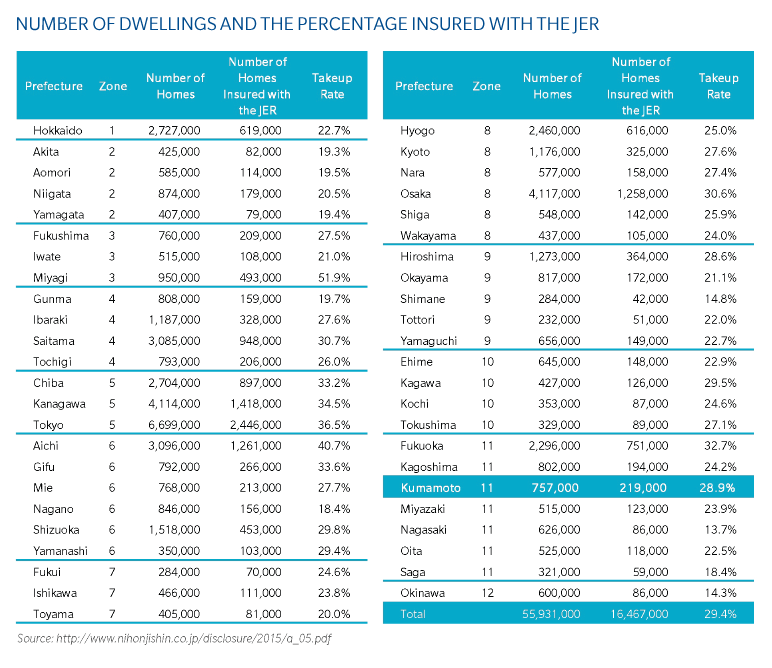
Japan is known for its earthquake potential; and like many other earthquake-prone countries, the government participates in insuring earthquake risk. For houses and residential buildings there are two major sources of earthquake insurance. One is via commercial non-life insurance companies with support from the government and the other is via cooperative insurers. For all buildings and man-made structures other than houses and residential buildings, earthquake insurance is available from commercial non-life insurance companies, albeit on a strictly controlled basis.
Earthquake coverage can typically be included on marine hull, ocean cargo and aviation hull risks. It is typically excluded for motor vehicles and personal accident insurance, though can be obtained.
Earthquake coverage includes earthquake, fire following, tsunami and volcanic eruption.
Residential Earthquake Coverage
Residential earthquake insurance provided by non-life insurers is strictly governed by a special law concerning earthquake insurance that was enacted in 1966 following the Niigata earthquake of 1964. Earthquake insurance is provided for an additional premium as an endorsement to the fire insurance policy, which covers buildings in residential use. The amount insured under the earthquake policy must be between 30 percent and 50 percent of the amount insured under the associated fire policy, with a maximum amount of earthquake insurance of JPY50 million (USD467,000) for buildings and JPY10 million (USD93,000) for contents.
Earthquake insurance on residential risks written by commercial non-life insurance companies is 100 percent ceded to the Japan Earthquake Reinsurance Company, Ltd (JER). The JER in turn retrocedes most of this risk to the Japanese government via an excess of loss structure, with a small portion retroceded back to the non-life insurance companies and reinsurer Toa Re. The companies must retain 100 percent of the retrocession. As of April 1, 2014, the program's limit was JPY7,000 billion (USD 65.421 billion) with the government assuming JPY6,738.6 billion (USD62.978 billion) in limit (96.3 percent), the JER retaining JPY224.7 billion (USD2.100 billion) (3.2 percent) and the non-life insurance companies retaining JPY36.7 billion (USD0.343 billion) (0.5 percent). Starting April 1, 2016, the program's limit was increased to JPY11,300 billion (USD105.607 billion) with the government retaining JPY10,990.2 billion (USD102.712 billion) in limit (97.3 percent). (1)
As of 2014, the countrywide take-up rate with the JER was approximately 29.4 percent with the take-up in Kumamoto Prefecture at 28.9 percent.

Note:
1. Source: https://www.mof.go.jp/english/financial_system/earthquake_insurance /outline_of_earthquake_insurance.html